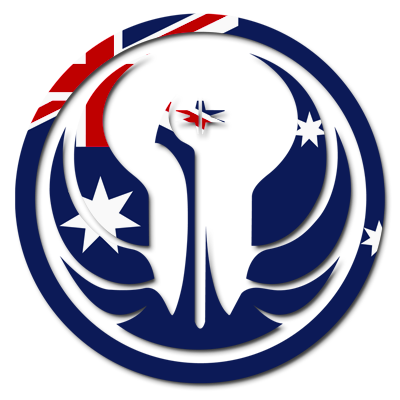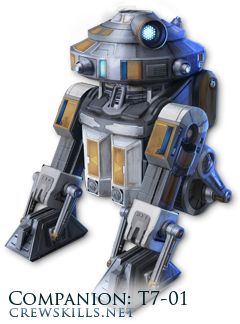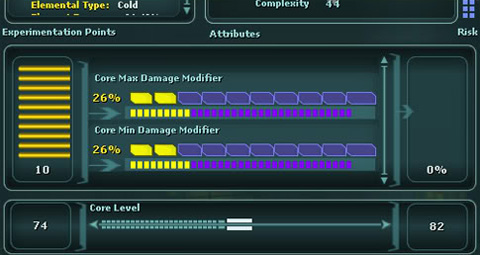You Have To Be Good To Do Bad Well
Prompted by DC Universe Online’s recent shift to free-to-play, and looking for something with which to while away the next few weeks, I reactivated my account a few days ago. I played when it launched earlier this year, for a month or so, until I hit the wall known as “hi, you’ve run out of content, it’s endgame or nothing for you!” – I played a hero, then, so I figured I’d try out the villainous side of life this time around.
Which prompted some ponderings about factional games, and narratives, and how careful you have to be when writing the ‘bad’ guys.
The fundamental problem is that if your factions are Good vs Evil, it’s really really hard to believe in the evil side.
Most MMOs are set up so that the factions are equal-and-opposite – to avoid balance problems regardless of who plays what. The Alliance will never ‘beat’ the Horde, the Sith Empire will never ‘beat’ the Republic, and the two sides can oppose each other for the lifetime of the game. One side may win a battle, or gain some ascendancy for a while, but the fundamental conflict can’t be resolved without changing your game more dramatically than most players will accept. (Which is, tangentially, the fundamental problem I see with the upcoming WoW expansion: the storyline has to end in stalemate or you piss off half your player base, but fighting just to stand still isn’t particularly satisfying.)
Equally, the two opposing factions are usually carefully cast not as Good vs. Evil, but Us vs. Them. Red vs. Blue. Each side has its moral high ground on some issues, and its utter sketchiness on others, but generally the player can believe that their faction is in it for the long haul; it works as a society, there are reasons for co-operation, and political bickering aside you’re not actually counting down the minutes until your own faction’s leaders try to shiv each other in the kidneys.
This is not a strength that DCUO possesses. It’s a limitation in part imposed by the source material – comic-book villains have always been very … well, comic-book – and the writers either didn’t manage to think beyond the problem, or didn’t realise it was one.
The villains in DCUO are exactly equal and opposite to the heroes, which strains credibility til it squeaks – or at least, it does for me. We understand why the heroes build themselves a Justice League Watchtower and organise for strength and mutual support – they have the same goals, and an ethos that values peaceful co-operation. Nobody thinks it’s surprising to see Superman, Batman and Wonder Woman working together, nor encouraging their protegés to do the same.
When it comes to the villains, though, it’s hard to say the same. Lex Luthor working together with Circe and The Joker, and all their minions playing nicely with each other? Indefinitely? That’s… a little harder to believe. And somebody built a Hall of Doom (because the villains have to have an equivalent of the heroes’ Watchtower) and just donated it to all the bad guys? Riiiiight. Comic book villains just don’t play well with others – at least, not in the long term. There’s the odd band of bad guys who share a goal (like Marvel’s Brotherhood of Mutants, for instance), there are friendships (like Harley Quinn and Poison Ivy) and romances (like Harley Quinn and the Joker), and any good villain has a collection of subservient minions — but it’s almost impossible to imagine a long-term large-scale collaboration between a big group of disparate villains. They simply don’t have the shared values and priorities that (most) heroes do – nor the willingness to sublimate their needs for the good of a shared culture.
That’s why they’re bad guys, after all.
So developing an overtly ‘evil’ faction takes some careful writing – you have to give the players a reason to accept that this large group of selfish, amoral individuals will work as a faction in the long term as well as the short term. You have to give the players a reason to believe that the factional leaders won’t destroy each other and their entire faction with internecine squabbling, and that the minions won’t destroy each other trying to rise to the top.
There are ways to do it, of course. You can drop the idea of making the bad guys an equal-and-opposite mirror of the good guys, which means you can give them whatever social structure and goals make sense – LotRO does it this way, where Monster characters are only available to play as PvP antagonists for normal PCs. You can give the evil faction an all-powerful übervillain who stamps out internal discord before it can do too much damage. (LotRO again.) You can give the bad guys a culture that values social order, like the Sith Empire in Star Wars’ Old Republic era – who, to borrow terms from tabletop gaming, are generally Lawful Evil, not Chaotic Evil. You can give the bad guys a (convincingly-explained) reason to put aside their differences and work together. But you just can’t stick a bunch of chaotic evil villains into a clubhouse without doing your narrative homework and then expect it to be a viable long-term faction – not without stretching credibility past its breaking point.


 Fact 3: There is already a contingent of Australian and New Zealand gamers who have preordered the game from American and European retailers with the intention of playing at American launch on North American servers (mostly in the US Pacific time zone). BioWare are aware of this, and have confirmed that they’re okay with it.
Fact 3: There is already a contingent of Australian and New Zealand gamers who have preordered the game from American and European retailers with the intention of playing at American launch on North American servers (mostly in the US Pacific time zone). BioWare are aware of this, and have confirmed that they’re okay with it.
 Those of you familiar with BioWare’s single-player MMOs will recall an array of memorable ‘companion’ NPCs who’d join you on your adventures. Bioware’s carrying this concept forwards into SWTOR, giving each class five unique NPCs who’ll join up with your character as a friend, apprentice, assistant, quest hook… and crafting minion.
Those of you familiar with BioWare’s single-player MMOs will recall an array of memorable ‘companion’ NPCs who’d join you on your adventures. Bioware’s carrying this concept forwards into SWTOR, giving each class five unique NPCs who’ll join up with your character as a friend, apprentice, assistant, quest hook… and crafting minion.
